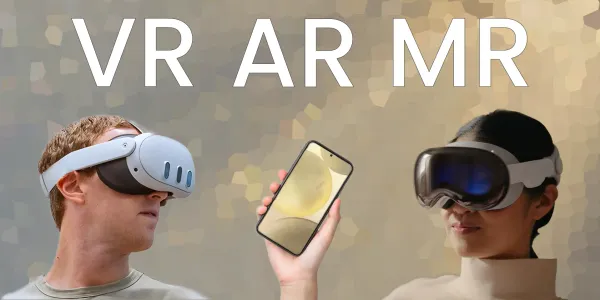The first step into the Metaverse: WebAR
What is the Metaverse? When was it born? Does it exist? From a science fiction book to a possibility: what is the state of the Metaverse and what we can apply today in the real life.

Lately, we often hear about the Metaverse, but what is it? And most importantly: is there a simple way to start experiencing it in practice? Let's proceed step by step, starting from the beginning.
The Metaverse was coined in 1992 by Neal Stephenson in the science fiction novel Snow Crash. It's described as a shared and persistent global virtual reality accessed by users through VR devices, where they interact through their avatars. It's a gigantic city where people can socialize, play, work, and own property. Physical laws are simulated, information is objects, and AIs appear as avatars. Reality and the Metaverse are intertwined; what happens in one influences the other and vice versa.
Stephenson, being a computer expert, envisions the Metaverse as something realistic, an imaginable evolution of technologies existing at that time but not yet powerful enough to realize it. Above all, it's depicted as part of everyday life: waking up in the morning to work in the Metaverse and spending evenings with friends.
Thirty years of technological development have brought to life all the "science-fiction" ideas Stephenson described in 1992. We have the Internet, a global communication network where we can instantly reach anyone, anywhere. The open nature of the Internet has made it the ideal platform to implement a multitude of services: the web, cloud computing, video calls, remote work, online shopping, streaming channels, social networks, multiplayer games, and so on.
In addition to software, hardware has also made huge strides. The power of today's processors allows us to play in photorealistic 3D worlds with real-time physics simulations. We have high-definition screens small enough to be used in Virtual Reality headsets. But above all, each of us owns a smartphone: a portable computational device that keeps us constantly connected to the global network.
Given these premises, in recent years, large companies and many startups have decided that the time was ripe to invest in integrating all these technologies to create the Metaverse. A new global platform of digital reality accessible to everyone via any device, usable for work, socializing, gaming, and shopping.
The journey towards the Metaverse has begun, and we can already see the first examples of it. But we are still far from its full realization, mainly because no one yet has a precise idea of what it will look like. Currently, "Metaverse" is an umbrella term under which various software positions itself, integrating existing technologies to achieve more immersive experiences (though not necessarily in VR). This integration process differs into two fundamentally different approaches: closed or open.
Companies adopting a closed approach tend to see the Metaverse as a product in itself: each will produce its own metaverse, incompatible with others (notice the lowercase "m"). In this case, the term "Multiverse" is used to define environments where users cannot use the same avatar or carry digital goods regardless of where they were purchased. This is the case with corporate multiverses like Microsoft's Mesh for Teams and Meta's Horizon Workrooms, or games with a strong social component like Fortnite and Roblox.
The open approach, on the other hand, is based on the adoption of open and interoperable standards and is embraced by companies aiming to create value by developing services in the Metaverse. An example in the industrial field is Nvidia Omniverse, a cloud platform for the creation and management of Internet-3D. Currently used for designing and monitoring digital-twin industrial plants, training robots in simulated environments, and developing AI-equipped avatars.

In the consumer field, the limiting factor is the need for dedicated hardware, such as a VR headset, whose penetration among end-users is minimal. But the situation has changed since browsers started natively supporting open standards like WebAR, turning most smartphones into AR viewers. This, coupled with the fact that the standard is web-based and therefore doesn't require the installation of any apps, has opened up a potentially enormous user base.
Such an opportunity could not be missed, and that's how My AR Studio was born: a cloud system that allows you to distribute your 3D products on the web and in AR. Through the web editor, you can quickly upload models in GLB format, modify colors and lighting, easily preparing different independent configurations or a single product selector. Through the Universal Viewer, products are immediately distributable on every type of device. With automatic link generation, QR codes, and HTML code, both desktop and mobile browsers are covered, as well as native viewing in Augmented Reality on Apple iOS and Android.
This service finds application, for example, throughout the Industrial Design supply chain. From the designer who can directly export a model of their project from CAD and immediately view it in AR, without having to wait for physical prototypes to be made. To the end consumer who, by opening the AR view from any e-commerce site, can see the product immediately in front of them, without having to go to a store to resolve any doubts that prevented its purchase. All this without having to install any additional software or apps!
In conclusion, let's answer the question we asked at the beginning: can we already experience the Metaverse?
Honestly, no, it doesn't exist yet. But we can certainly use its technologies. Whether the Metaverse comes to fruition or not, the technologies that compose it are already beginning to be applied in our everyday world.
And among all, WebAR is certainly the most accessible.




